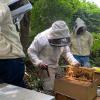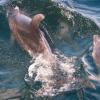Status of Protected Area Systems in the Wider Caribbean Region (1966)
This report documents developments in the protected areas systems in the 37 states and territories that make up the Wider Caribbean Region. Overall, 1,307 protected areas (20% with marine or coastal resources) covering 116 million ha have been established in the region. An increasing number of conventions and programmes are available to support national efforts to manage protected areas for multiple conservation objectives, including biodiversity, research and training, watershed protection, recreation and ecotourism and sustainable production of timber, fibres, game species, medicinal plants and fruits.
While these figures are heartening, at the same time they illustrate the enormous challenge that the protected areas movement faces. As protected areas coverage has risen the need to provide services and facilities for increasing numbers of tourists and researchers, carry out resource inventories and applied research, and work with local communities to optimise sustainable resource management and local participation become increasingly important. At the same time external pressures produced by urban and industrial expansion, energy and mineral development, agro-industry, global climate change, deforestation and the expansion of the agricultural frontier are increasing with equal speed.
Protected areas management was once seen as a largely technical responsibility best handled by the state, but today the restructuring and down-sizing of governments throughout the region has led many agencies to accept increasing participation from non-governmental organisations. In many cases this has led to the development of strategic alliances to achieve management goals. Co-ordinating efforts between traditional government agencies and NGOs is another challenge that has to be resolved.
Much has been written concerning the gaps that exist in our understanding of the region's exceptional biodiversity. However, equally important gaps exist in our understanding of the social use of natural resources by local communities. It is widely recognised that there is a tremendous shortage of financial resources for management of the protected areas of the region. However, the shortfalls in the development of planning and management techniques, together with appropriate training for protected areas managers, field personnel and community volunteers represent a strategic challenge for protected areas systems. As seen from this perspective much has been achieved, but much more is needed to guarantee that protected areas will efficiently and effectively produce the conservation objectives for which they were established. National agencies and local conservation groups have the opportunity and the obligation to ensure that the limited human, financial and political resources available are used to establish solid foundations for the development of protected areas systems as we rapidly approach the dawning of the 21st century
Area of interest: Grenada
Year: 1966




